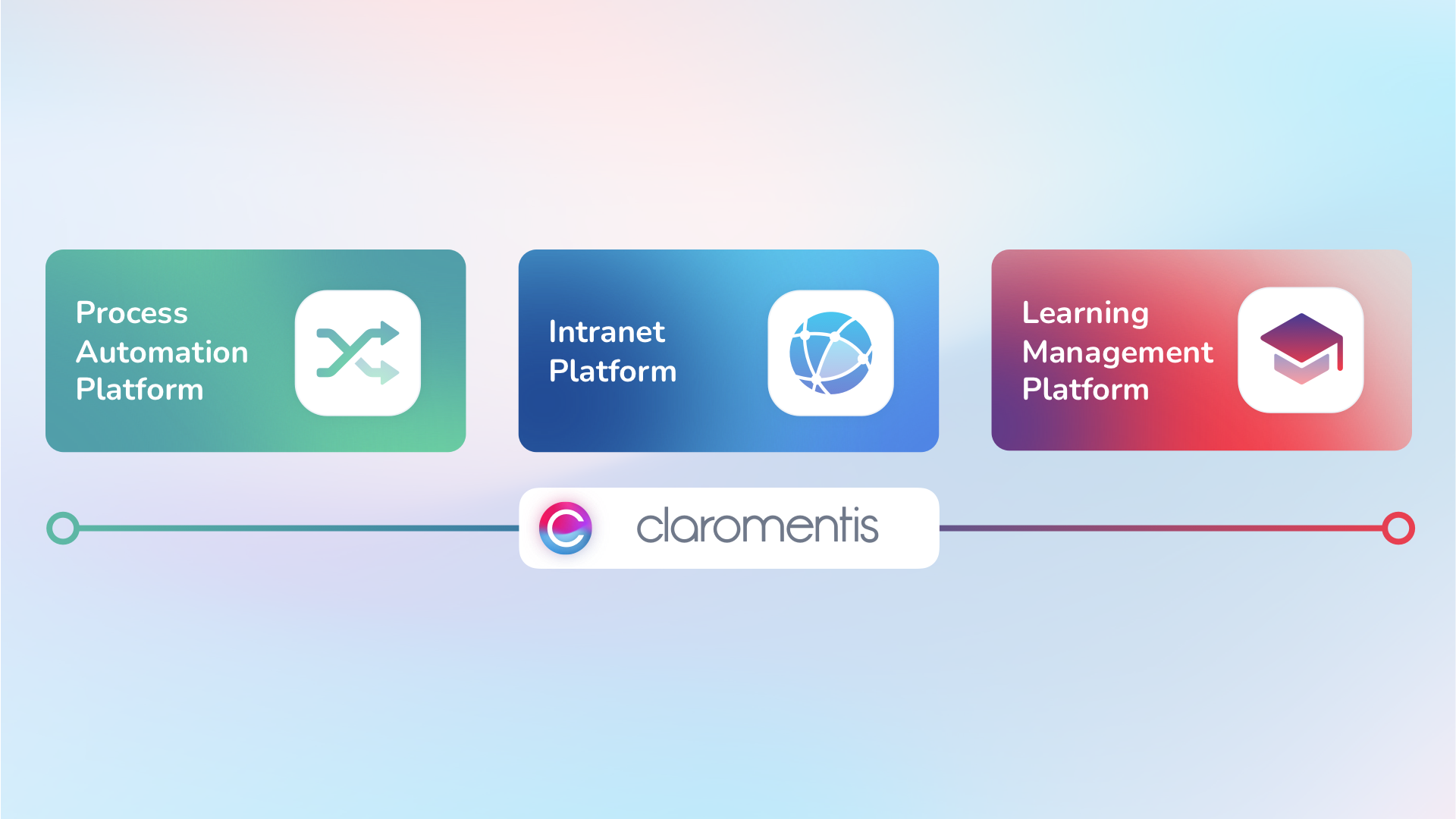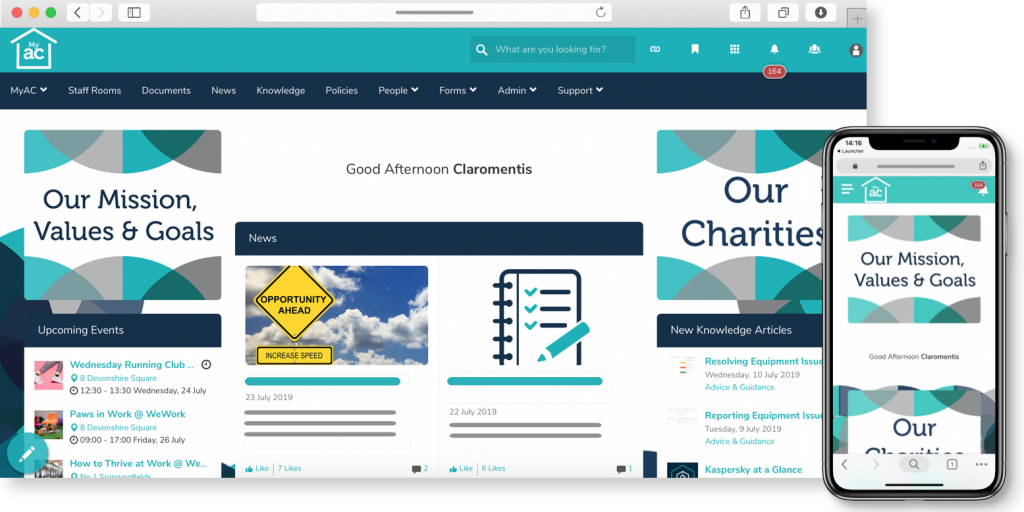If you hadn’t thought about a digital workplace strategy before the COVID pandemic, there’s a very good chance you’re thinking about one now.
An effective digital workplace strategy allows your employees to work closely with each other, regardless of where they are geographically. If you’re thinking of implementing remote working (or even hybrid working) as a result of the pandemic, or even if you need flexibility in the case of employee self-isolation, a digital workplace strategy is essential.
Digital workplace strategies have a significant positive effect for those working in the office too. They break down silos, improve communication, help you reduce time-to-hire, and allow you to automate time-drain administrative tasks that slow down value added work.
Below, we go into more detail about what a digital workplace strategy is, and how digital transformation in this area benefits your business.
What is a digital workplace strategy?
A digital workplace strategy is a set of systems, processes and workflows put in place that allows your workforce to work from anywhere. An effective digital workplace strategy takes your workplace beyond a physical office.
There isn’t a single ‘digital workplace’ software package you can install that will do this for you. Technology provides the means and the access, but you’ll need to build a solid internal communication and collaboration strategy and develop a workplace culture where digital processes thrive.
In other words, a digital workplace strategy is as much about cultural shift as it is implementing a great intranet or finding the right video conferencing tool for your needs. You can’t have one without the other.
Creating a digital workplace for healthcare: A strategy example
Healthcare providers Emergency Physicians of the Rockies audited their communications channels after an expansion. They found that paperwork was moving back and forth slowly via interoffice mailers, and that too many emails meant that key information wasn’t getting through.
Now, they use company intranet software to post, organise, and share important information in real time. They have mandatory read processes in place to ensure that relevant staff have received the information, while digital workplace learning tools have provided employees with flexibility around busy shifts. This has created widespread buy-in for the project.

(Image source: claromentis.com)
What are the benefits of a digital workplace strategy?
The overall benefit of building a digital workplace strategy is that you facilitate collaboration and knowledge sharing across your work environment.
Even if you primarily work out of a single location office and are planning on returning to full-time office work, a good digital workplace strategy will ensure that:
- Your employees can communicate well
- Your employees can access the information they need quickly
This allows your entire organisation to increase productivity as a result.
Breaking down departmental silos
One of the biggest slowdowns organisations face is the fact that various bits of information are siloed into different departments.
By implementing company-wide systems like an employee intranet you make it easier for this information to flow across your organisation when needed. Deadlines become easier to hit, different departments are better informed of the work others are carrying out, and everyone works better together as a result.
Widening the talent pool
Having a digital workplace strategy also has a significant effect on your ability to hire suitable candidates and fill positions.
If you have the right digital infrastructure in place, you’ll be able to hire outside of your locality and attract top talent from across the country – or even beyond. As well as drawing talented people to your company, this can speed up the hiring process considerably as it expands the options you have available to you.
A recent study by the University of Strathclyde suggests that 78% of office workers want to go into the office no more than twice a week. Notably, almost a third (31%) said that they would prefer not to go into the office at all.
This means remote or hybrid working could be a major draw particularly after the last year, during which many people realised the work/life benefits remote or hybrid working gives them. If you can offer this to new hires via an effective digital workplace strategy, you will likely be offering a particularly attractive proposition.
Automating manual processes
How much time does your workforce spend on necessary but low-value administrative tasks? What more could be accomplished if they didn’t need to do that.
An effective digital workplace strategy automates some of these processes, so your employees can reinvest their time in work that adds value. Expense filing and booking leave are both examples of basic processes that a digital workplace strategy could automate, and there are many more.

Automations will speed up your manual processes
How to create a digital workplace strategy
Your digital workplace strategy rests on:
- Technology: does your workforce have the digital tools to collaborate and share knowledge in a remote or hybrid environment?
- Internal communications strategy: can you leverage your digital infrastructure to provide all your employees with the information needed to do their jobs?
- Employee engagement: will your employees embrace working digitally, with a net positive effect on productivity levels?
Creating a great digital workspace relies on you balancing all of these needs. You can implement the best workplace intranet out there, but if you don’t have a solid communications plan alongside it, that intranet won’t add any value.
Equally, no technology or communications strategy will work if your employees don’t buy into working digitally.
How you build these three elements in your organisation will depend on your own structures, processes, technology, and company culture. That said, there are a few starting tips we can offer which we think hold near universal usefulness:
- Change starts at the top. If you get your senior team to visibly use and promote digital workplace initiatives, it will be easier to encourage others to follow suit.
- If you want a truly flexible digital strategy, look to the cloud. Cloud-based software can be accessed from anywhere with an internet connection, making it a much more adaptable option than on-premise – and it’s easier to maintain, IT-wise.
- User experience is important. If your digital tools are difficult to use, your employees won’t use them. Design is important – thoroughly road test any software pre-purchase.



